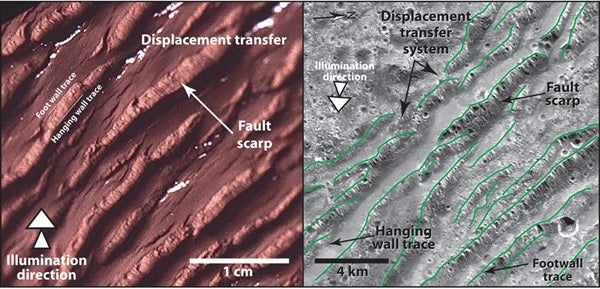Physical analog models simulate geologic structures in laboratory settings so that the developmental sequence of various phenomena can be studied as they occur. The team, including researchers from SwRI, Wheaton College, NASA’s Jet Propulsion Laboratory, and NuStar Energy LP, created complex patterns of faults in their models, similar to the ridge and trough features seen in some regions of Ganymede. The models consisted of a “wet clay cake” material possessing brittle characteristics to simulate how the icy moon’s lithosphere, the outermost solid shell, responds to stresses by cracking.
The laboratory models suggest that characteristic patterns of ridges and troughs, called grooved terrain on Ganymede, result from its surface being stretched. “The physical models showed a marked similarity to the surface features observed on Ganymede,” said Danielle Wyrick from SwRI. “From the experiments, it appears that a process in which the crust breaks into separate blocks by large amounts of extension is the primary mechanism for creating these distinct features.”
“Physical analog modeling allows us to simulate the formation of complex 3-D geologic structures on Ganymede without actually going to Ganymede,” said David Ferrill from SwRI. “These scaled models are able to reproduce the fine geometric details of geologic processes, such as faulting, and to develop and test hypotheses for landscape evolution on planetary bodies.”
SwRI researchers previously have used physical analog models to examine the process by which pit crater chains — a series of linear pits, or depressions — develop on Mars and how magma in the martian subsurface deforms the surface of the Red Planet.










